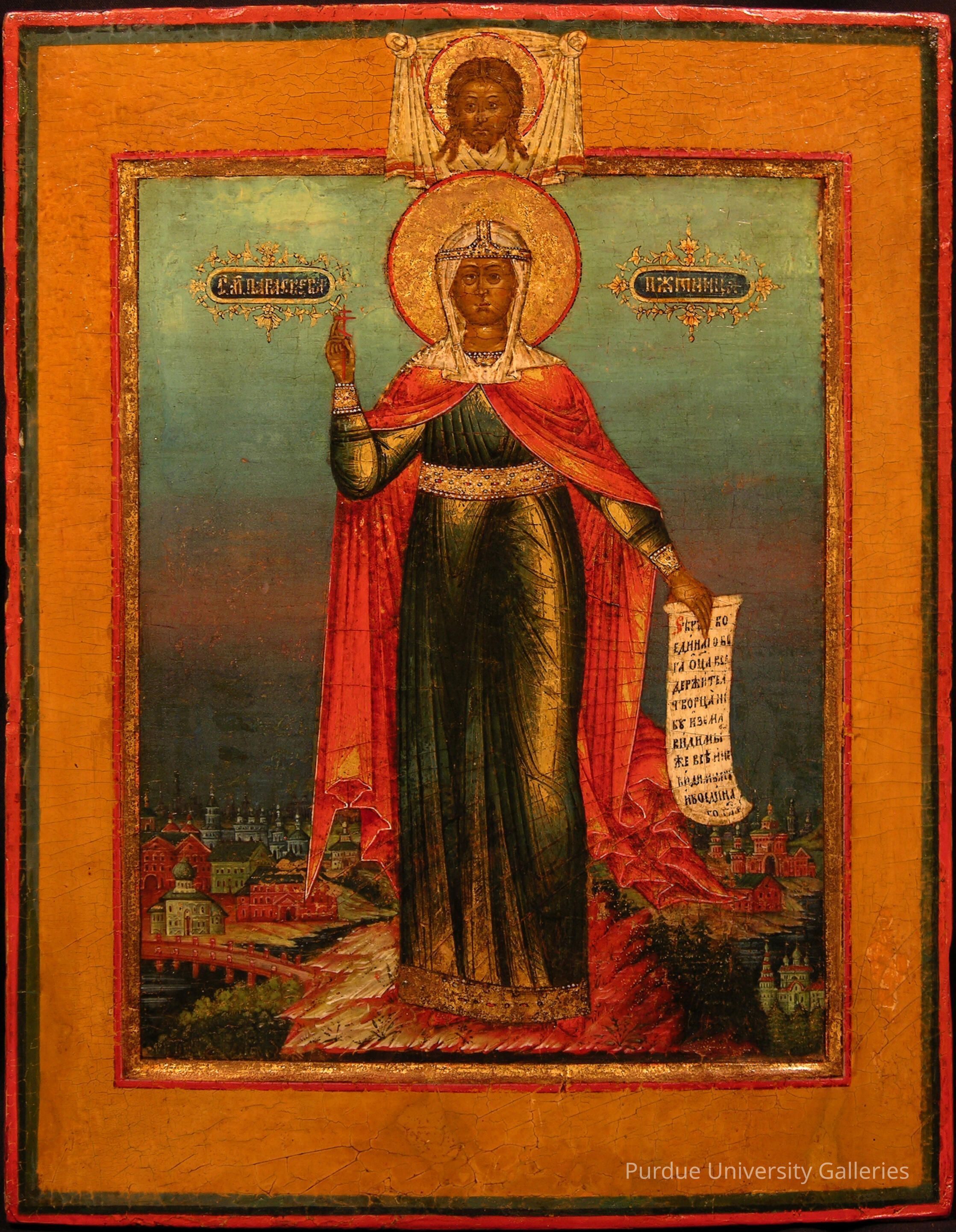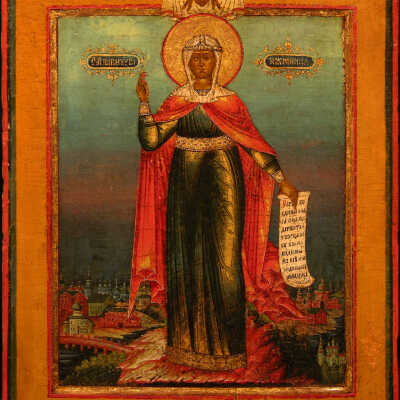Saint Paraskeva
Name/Title
Saint ParaskevaEntry/Object ID
2005.02.069Description
Tempera on curved wooden panel bordered in red, greens, and mustard yellow. The central image shows a woman clothed in a green dress with gold embroidery at the waist, hem, and cuffs. She wears a red cloak and a white head veil. She holds a small red orthodox cross in one hand and an open scroll in the other. She stands in a background with a teal sky and multi colored buildings. Appraisal sticker on the backside for $3200Type of Painting
PanelArtwork Details
Medium
TemperaAcquisition
Accession
2005.02Source or Donor
Betsy ScheuringAcquisition Method
GiftCredit Line
Gift of Betsy ScheuringMade/Created
Time Period
18th CenturyPlace
Country
RussiaLexicon
Nomenclature 4.0
Nomenclature Secondary Object Term
IconNomenclature Primary Object Term
Symbol, ReligiousNomenclature Sub-Class
Religious ObjectsNomenclature Class
Ceremonial ObjectsNomenclature Category
Category 08: Communication ObjectsDimensions
Height
13 inWidth
10 inDepth
1-1/2 inExhibitions
Spirit Made Tangible: The Scheuring Icon Collection (2006)
Surveying the Sacred: Analysis of the Scheuring Collection of Eastern Orthodox Icons (2025)

